Talk Outline for Week 1:
Prayer is a Personal Relationship with God
Welcome to the Praying with Scripture series taught by Archbishop Hebda and Bishop Cozzens.
Below is the outline for Talk 1, titled “Prayer is a Personal Relationship with God.” As you listen to the teaching video, follow along in this outline. You may print this outline and use the space to the right for notes, or use your own journal for notetaking.
Talk Outline
I. The goal is to help everyone grow in their prayer life.
- Will draw upon the tradition, with a focus on St. Ignatius teaching on prayer.
- St. Ignatius teaching is designed for the active life. Finding God in all things was his goal.
II. Prayer is a way to enter into a relationship with God.
- God is personal.
- “Being a Christian is not the result of an ethical choice or a lofty idea, but the encounter with an event, a person, which gives life a new horizon and a decisive direction.” (Joy of the Gospel 7; Pope Francis quoting Pope Benedict XVI)
III. Prayer is the place where I live this relationship.
- “Prayer is not something accessory, it is not ‘optional’ but rather a question of life or death. Only one who prays, that is, who entrusts himself to God with filial love, can enter into eternal life, which is God himself.” Pope Benedict (March 4, 2007)
IV. I must believe that God desires a personal relationship with me.
- Letter from Mother Teresa to her sisters in the 1990s. “… have you seen with the eyes of your soul how He looks at you with love? Do you really know the living Jesus – not from books but from being with Him in your heart? Have you heard the loving words He speaks to you? Ask for the grace, He is longing simply to give it….” (Mother Teresa, Varanasi Letter)
- Prayer is this encounter with love that changes me and begins to transform me.
V. God speaks first, God pursues us; what He has to say is most important.
- Zacchaeus – Jesus takes the initiative.
- “… The wonder of prayer is revealed beside the well where we come seeking water: there, Christ comes to meet every human being. It is he who first seeks us and asks us for a drink. Jesus thirsts; his asking arises from the depths of God’s desire for us. Whether we realize it or not, prayer is the encounter of God’s thirst with ours. God thirsts that we may thirst for him. CCC ¶2560
VI. A word about silence and imagination.
- The importance of silence. St. Augustine: “I was without, you were within.”
- Use of imagination.
- Imagination is a faculty that God gives us to make images in our mind and to experience within ourselves a spiritual reality.
- Real imagination versus fantasy.
- St. Ignatius conversion; God at work in his imagination.
- Scenes in scripture communicate truth, not just the words.
- Prayer with the imagination can provide a real experience of God’s love, God’s glory that transforms me. “Meditation engages thought, imagination, emotion, and desire. This mobilization of faculties is necessary in order to deepen our convictions of faith, prompt the conversion of our heart, and strengthen our will to follow Christ….” Pope Benedict XVI, Address to Seminarians and Youth
- St. Ignatius encourages us to pray with our imagination, applying all the spiritual senses of the soul. In the example of praying with the Nativity scene, see with the site of imagination the place and the persons, hear what is being said, smell, taste, and touch, drawing profit from it.
VII. Basic outline of a time of prayer; The Prayer Companion
- I prepare my heart for prayer and ask for a grace.
- Prayerfully, I read the scripture passage using my reasoning and imagination, reflecting on the truth the Lord is communicating to me.
- I converse with God:
- Acknowledge – I acknowledge the thoughts, feelings, and desires arising in my heart.
- Relate – I honestly relate these to God, trusting he is present and listening to me, his beloved child.
- Receive – I listen to what the Lord wants to say to my heart.
- Respond – I conclude my prayer time speaking to Jesus, God the Father, and/or the Holy Spirit as I would speak to a friend. I resolve to act in a concrete way to love God and neighbor, which could be something small.
- I rest in the Lord.






 Kimberly Kay Cox
Kimberly Kay Cox







 Mark Mogilka
Mark Mogilka














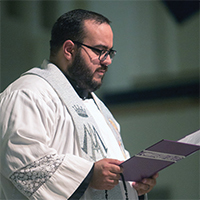





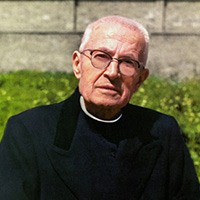







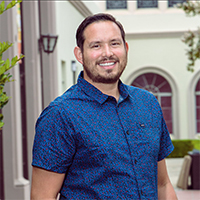
 Armando Cervantes
Armando Cervantes Anna Betancourt
Anna Betancourt
 Andrea Chavez-Kopp
Andrea Chavez-Kopp